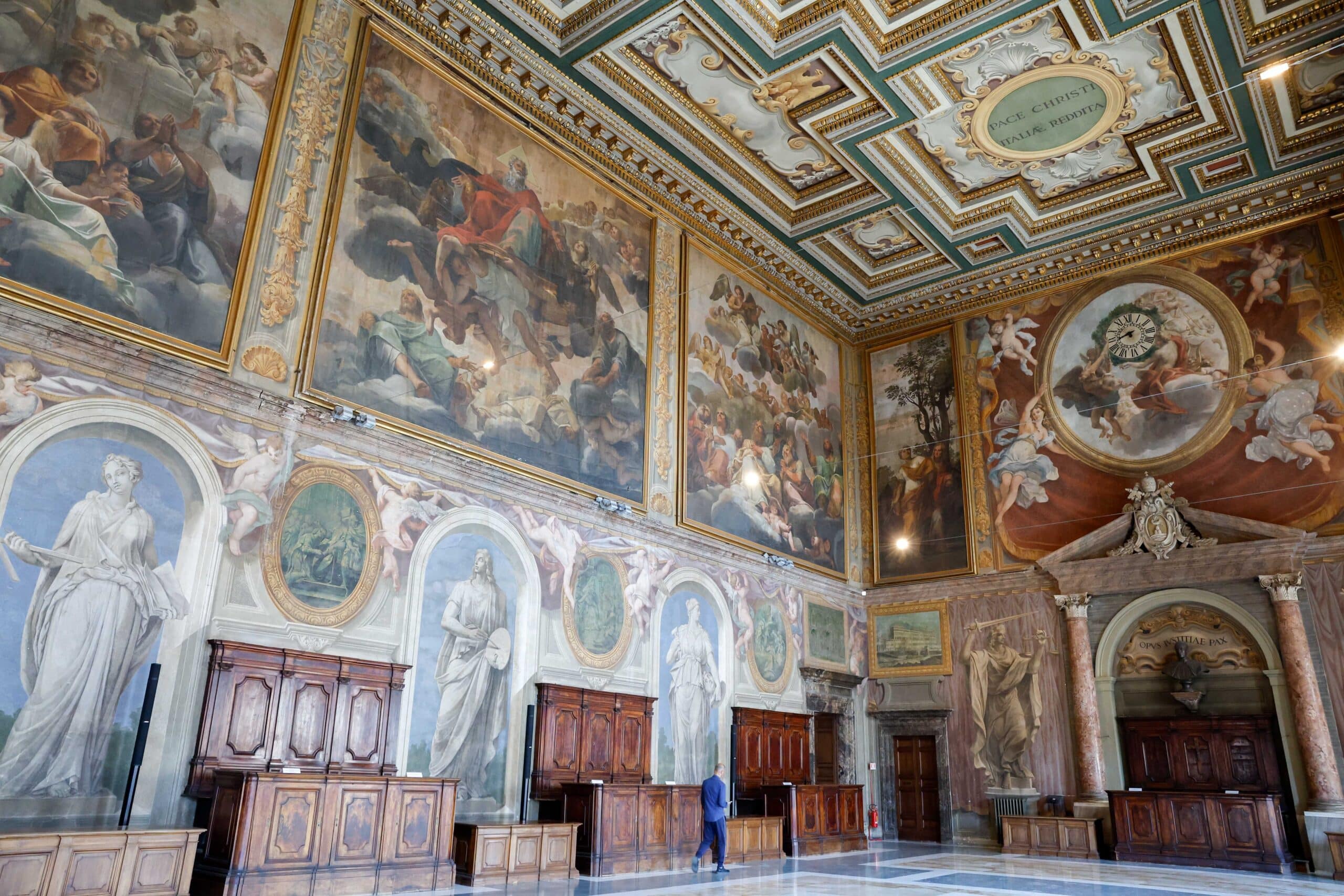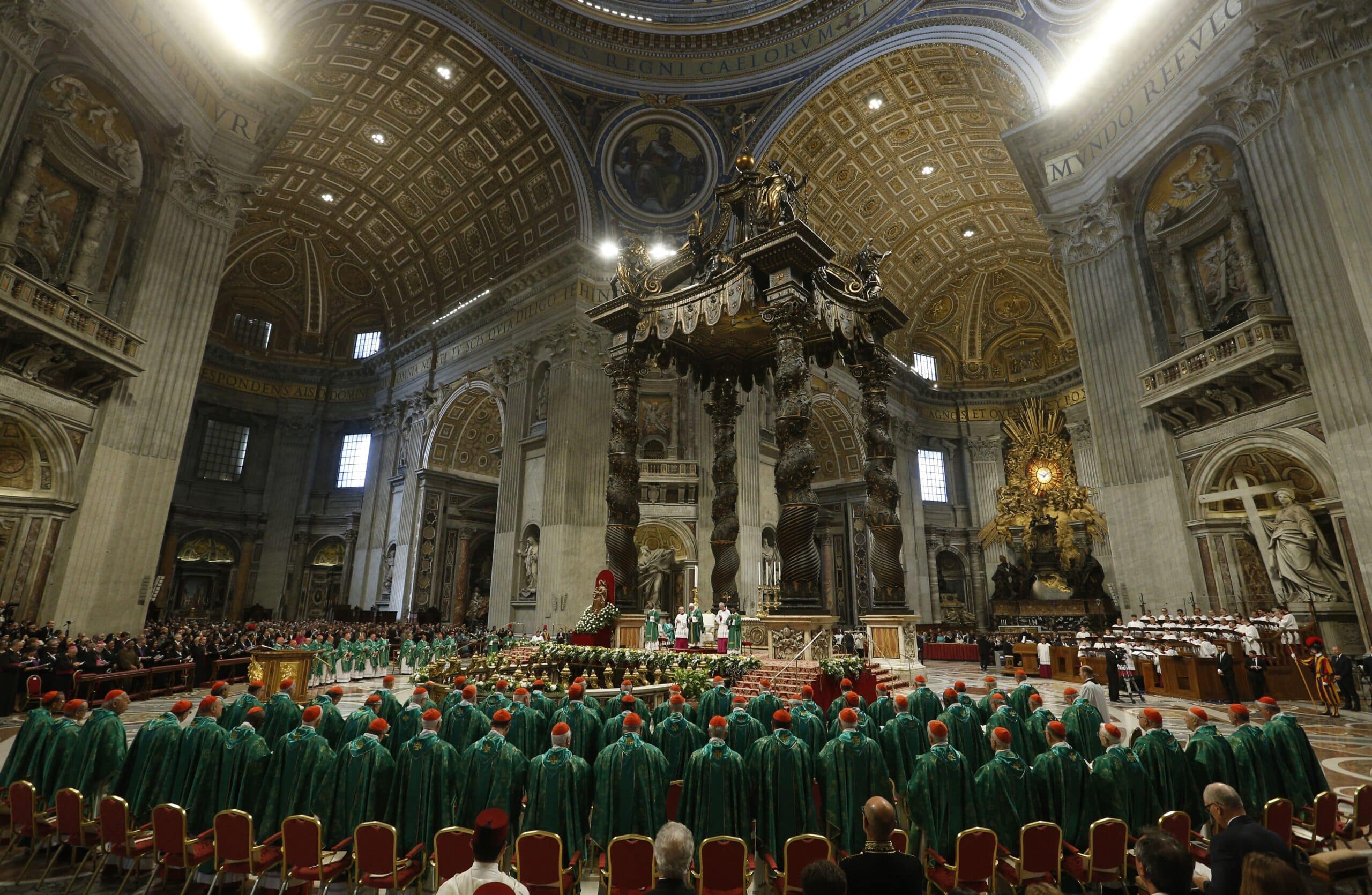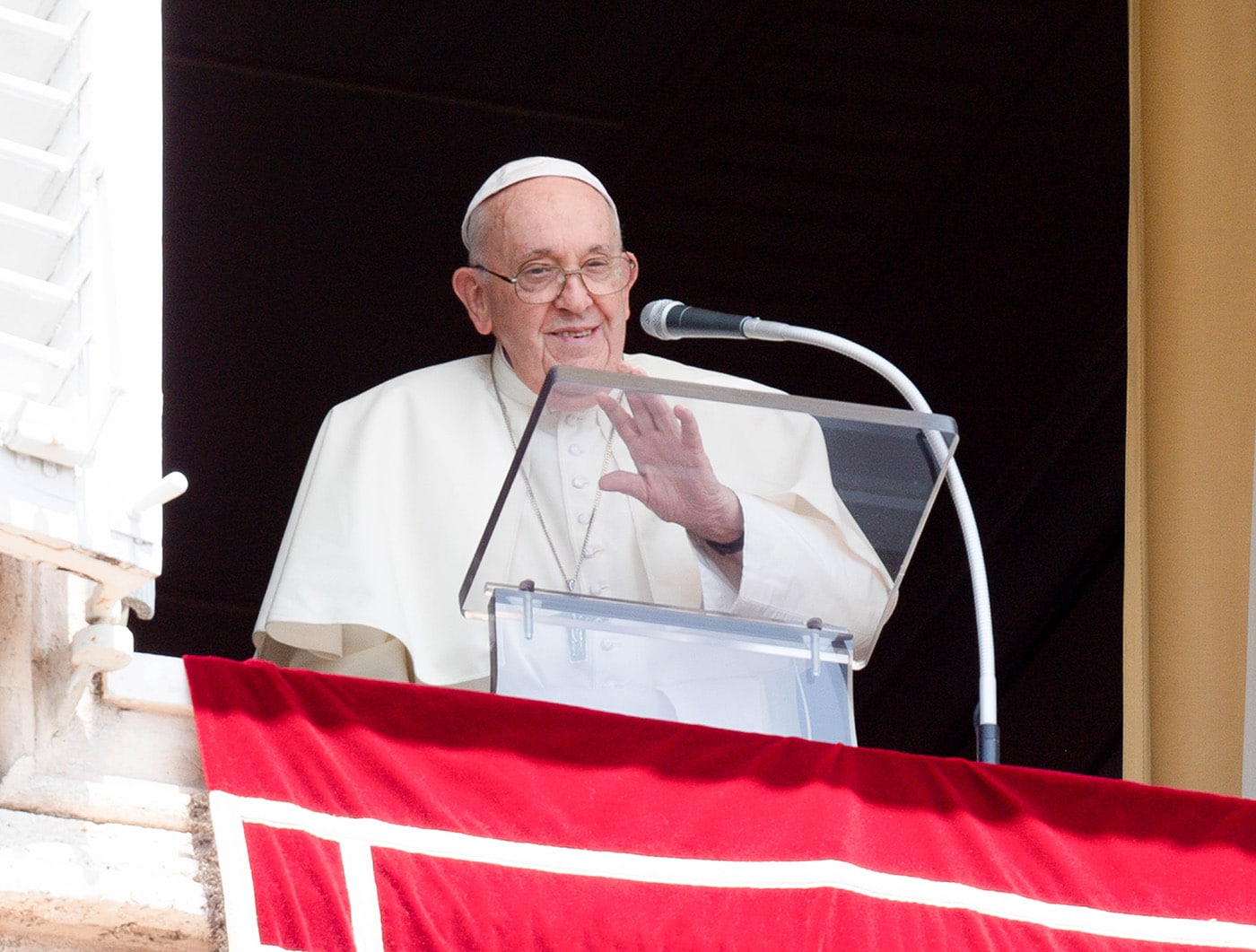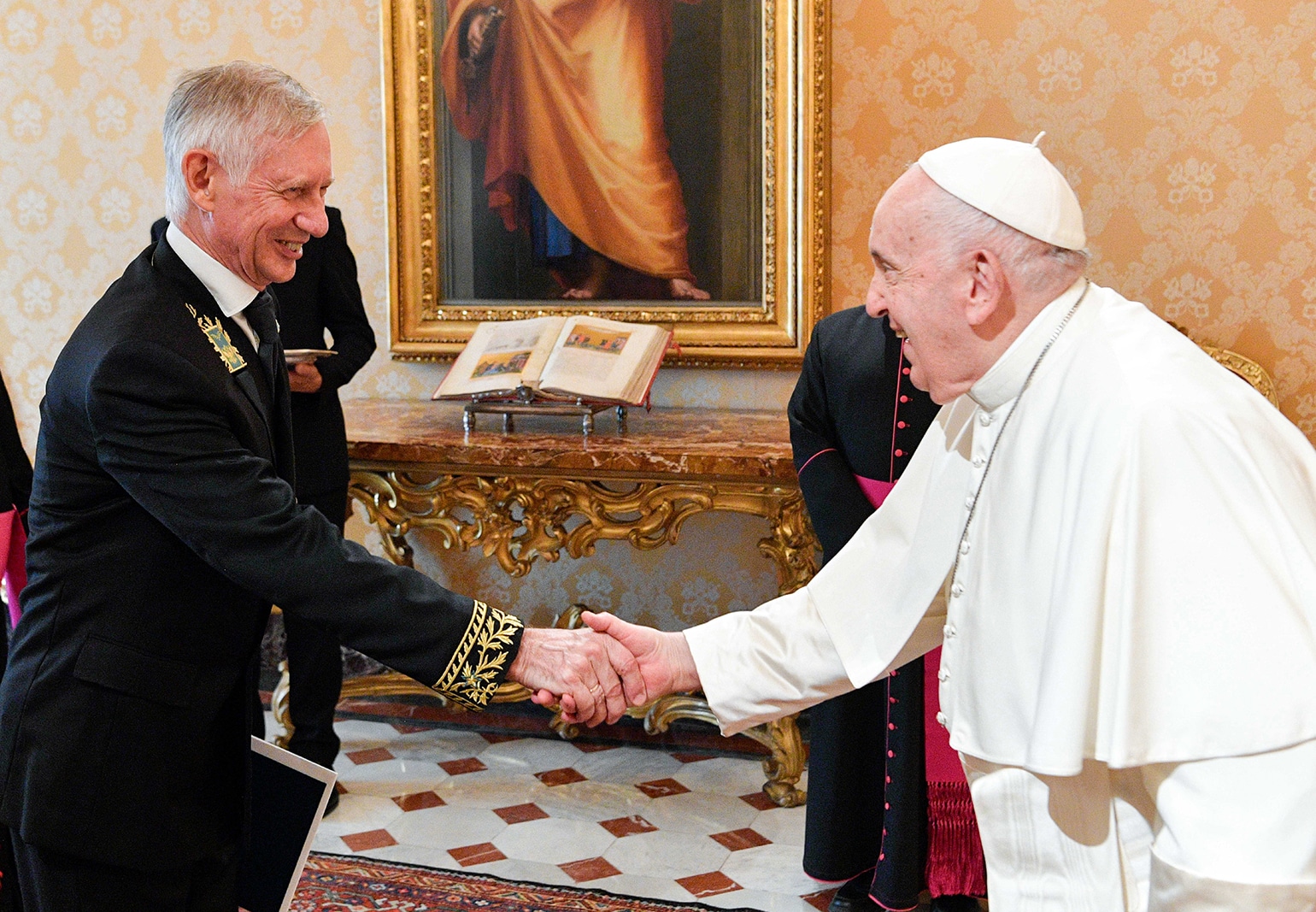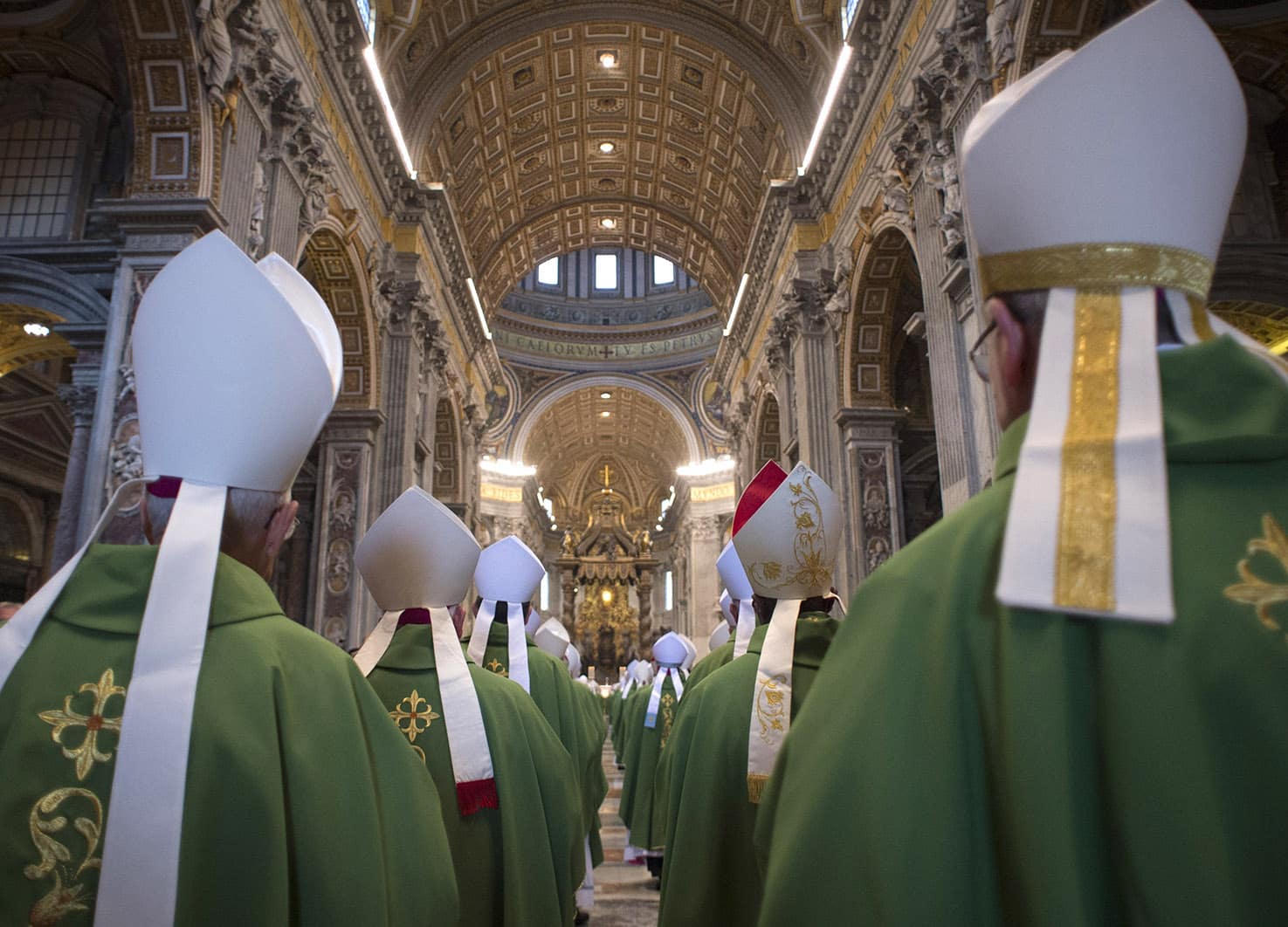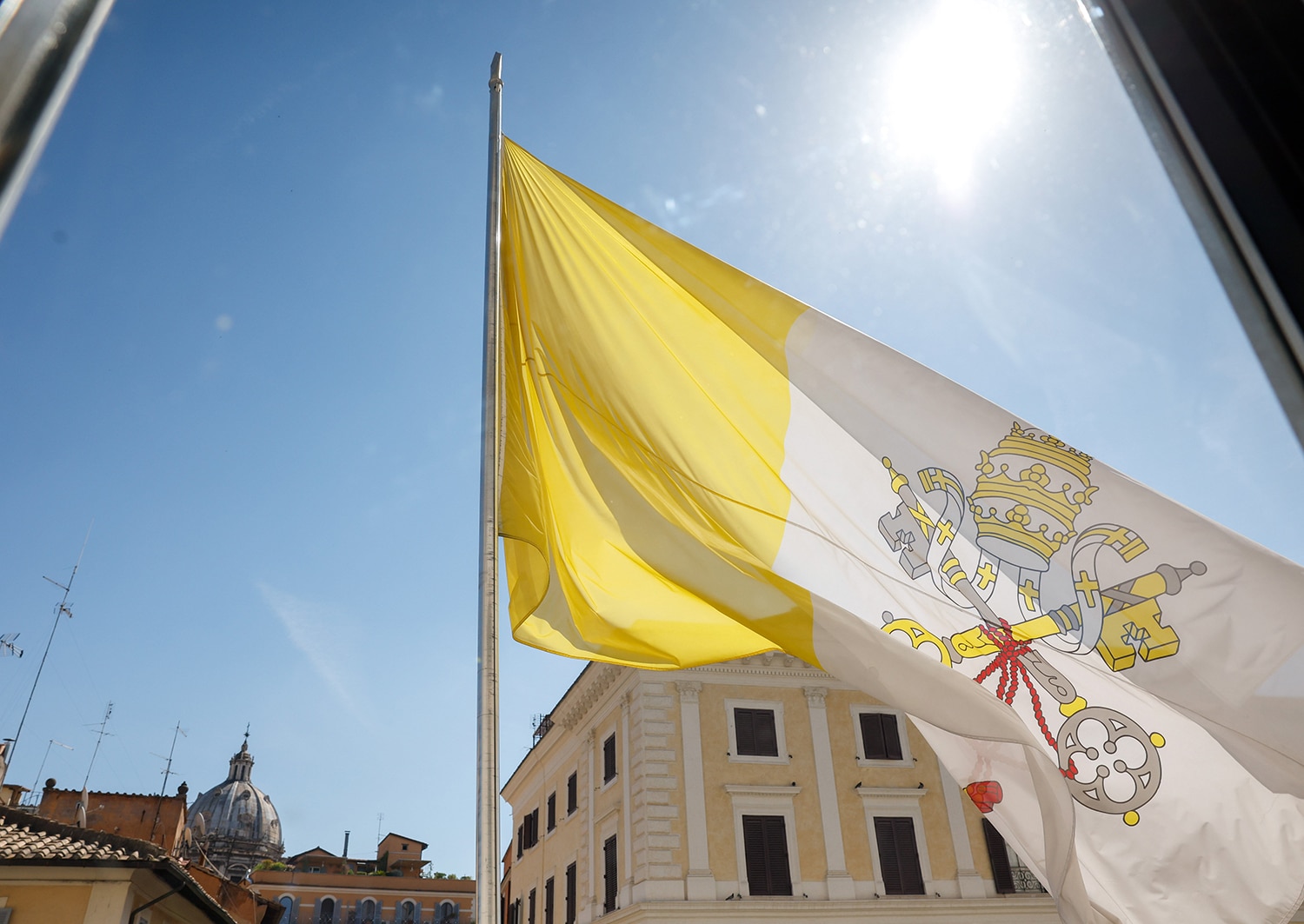ROME (CNS) — Transparency means more than just releasing annual financial reports and balance sheets, Bishop Nunzio Galantino, president of the Administration of the Patrimony of the Holy See, told Vatican-accredited reporters.
Transparency also means showing “the quality of what is safeguarded. This is a step forward,” he said Sept. 12 inside the sumptuously frescoed Sala Vasari, just one of dozens of rooms in the Vatican-owned Palazzo della Cancelleria that were specially opened to reporters for a brief tour.
The bishop’s office, which is known by its Italian acronym, APSA, controls most of the Vatican’s investment portfolio, including real estate. APSA directly administers 4,072 properties, which include churches, Vatican office buildings, residences for Vatican officials and apartments rented to Vatican employees, commercial office space and farmland, it said in its 2022 annual report.
Only 19% of the property is rented on the open market, it said, while 12% is rented at reduced rates to employees or retired employees; the rest is used by Vatican offices or religious orders.
Bishop Galantino told reporters that the administration of these assets “means to take care of them and make available (their) culture, beauty, history and wonder.”
APSA decided to make the Palazzo della Cancelleria available to the press for a special tour since the massive Renaissance building is normally only open to the public for special events or talks or by special request.
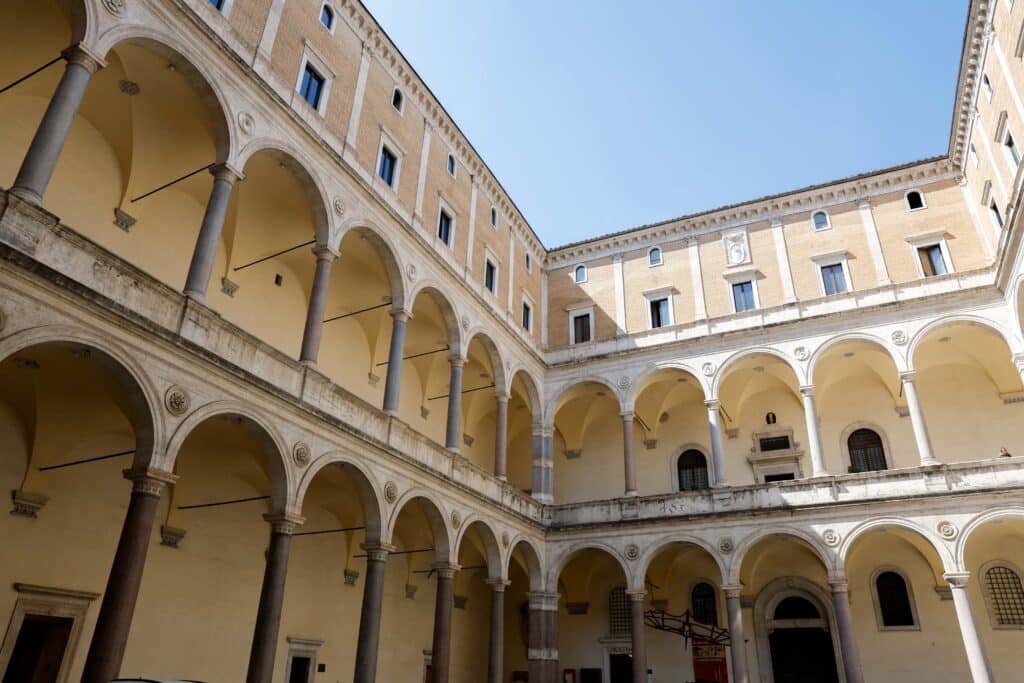
Home of Vatican tribunals
It houses several Vatican tribunals: the Apostolic Penitentiary, a Vatican tribunal dealing with matters of conscience, the sacrament of reconciliation and indulgences; the Tribunal of the Roman Rota, which mainly deals with appeals filed in marriage annulment cases; and the Vatican’s highest tribunal, known as the Supreme Court of the Apostolic Signature.
Three experts in architecture and engineering, who were part of the building’s four-year restoration several years ago, took turns pointing out many of the rooms’ special features and history.
It is the first large building in Rome built from the ground up in the early Renaissance with work starting in 1484. It was made to be the residence of Cardinal Raffaele Riario, who was camerlengo or chamberlain of the Holy Roman Church and nephew of Pope Sixtus IV.
Rooms are filled with frescoes, such as the Sala Vasari, which was decorated by Giorgio Vasari.
One of the guides, Mauro Tomassini, said stone was repurposed from the Colosseum, the Roman Forum and the thermal Baths of Diocletian as Cardinal Riario loved the style of Imperial Rome.
It was built atop the very early Christian-era Basilica of San Lorenzo in Damaso, which was razed for the new building. The fourth-century foundation walls can still be seen underground as well as a small pile of human bones nearby, which the guides said, were evidence that the area had also been used as a cemetery in the early centuries. A new minor basilica was built within the palazzo complex later.

